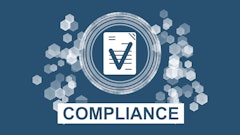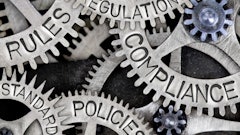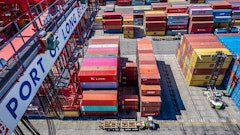
Software Advice, a company that analyzes and recommends inventory management software, recently conducted a survey in which it polled nearly 400 retail employees in the U.S. to better understand the frequency of employee theft and how new software can help stop it from occurring. Some of the survey’s most revealing findings include:
- 22 percent of employees at stores without inventory management software openly admitted to stealing products.
- 37 percent of employees working at a store without inventory management software see employee theft as a problem.
- Only 37 percent of mom-and-pop businesses are using inventory management software.
Forrest Burnson, a market research associate at Software Advice, sat down with Supply & Demand Chain Executive (SDCE) to further discuss the risk of employee theft and how to better manage that risk.
SDCE: Why is employee theft a big deal?
Burnson: Believe it or not, employee theft is often a more serious problem than customer theft, especially in retail and food service. It's a big deal because it's a difficult issue for employers to navigate. Most of the time, they want to always trust their employees and give them the benefit of the doubt. Crooked employees can exploit this trust, commit theft on a regular basis and go undetected because employers just don't want to confront the possibility that someone they entrusted their livelihood to is stabbing them in the back.
SDCE: How can inventory management help prevent the problem of employee theft?
Burnson: It's all about consistent record-keeping, organization and pattern recognition. If a business owner is doing regular cycle counts of inventory and making note of discrepancies, patterns can start to emerge if there is a problem, which can lead to a more thorough investigation. Practicing proper inventory management also acts as a deterrent, too—if employees know that the owner or manager does regular cycle counts and audits, they may be less likely to steal.
SDCE: How does inventory management software work and what are its benefits?
Burnson: It's quite simple—typically, inventory management software will integrate with barcoding hardware and point-of-sale software. The inventory management software keeps track of what you have, how much of it you have, where it is in the store or warehouse, and when it is sold. The primary benefit is that this saves business owners a considerable amount of time from not having to manually enter in this information every time an item enters or leaves the store. Furthermore, inventory management software can help maintain the right inventory levels by using data from historical sales to project future sales.
SDCE: How does inventory management software compare to other resources for avoiding employee theft in terms of effectiveness?
Burnson: It's not an either/or choice, really. Using inventory management software alone will not prevent theft, but it will give business owners better insight and intelligence into their business' daily operations, and it can point them in the right direction if something is going wrong. You have to take a holistic approach to preventing employee theft: At the end of the day, it comes down to hiring the right people, keeping track of everything, being organized, using technological deterrents like magnetic sensors and security cameras when necessary, and leveraging the power of software and other technologies to make business processes easier and less time-consuming.
SDCE: What are the other resources/methods that help deter employee theft that may or may not be effective, and why?
Burnson: As I said above, it's all about the holistic approach, but the most important aspect will always be the people you choose to handle the daily operations of your business and the policies you put in place to prevent wrongdoing from happening. Many retail stores have a blanket policy of checking every employee's bag before he or she leaves work, for example. When everyone has to do it, no one ever feels like he or she is being singled out, and it just becomes part of their routine. That's not always feasible in bigger stores with a lot of employees coming and going, so that's when you do have to be more reliant on other forms of prevention.
Security cameras are the classic deterrent, but you'd be surprised how many business owners don't check the tapes regularly or don't archive footage for longer than a day. Radio frequency identification (RFID) tags can be an expensive investment, but big retailers couldn't live without them these days. Not only do they cut down on the time it takes to perform cycle counts, but the item-specific information they hold can make theft more discernible. For example, they may help a store owner notice that clothes in a particular size are frequently missing. That can help the owner determine who the culprit is.



























